Mario Kart Live: Home Circuit on Switch
When I was growing up, I loved RC cars. I raced them around my driveway, drawing tracks out of chalk and setting up stuffed animals as obstacles.
If you had told 10-year-old me that a game could broadcast my race tracks onto my TV while I drove through them in real-time, I would have certainly put it at the top of my Christmas wishlist.
I suspect many 10-year-olds will have Mario Kart Live: Home Circuit on their wishlists this holiday season. The game itself is a brilliant idea: you use your Nintendo Switch to control a toy kart around a real-life course you set up in your house. The kart has an attached camera that broadcasts footage to your Switch or TV screen.
In addition to the kart (which, depending on the set you buy, features either Mario or Luigi as the driver), the box comes with four gates and two direction signs that are used in setting up your course.
When Home Circuit works, it works well and is quite enjoyable. It seems like the start of something great, but unfortunately, it doesn’t reach its fullest potential.
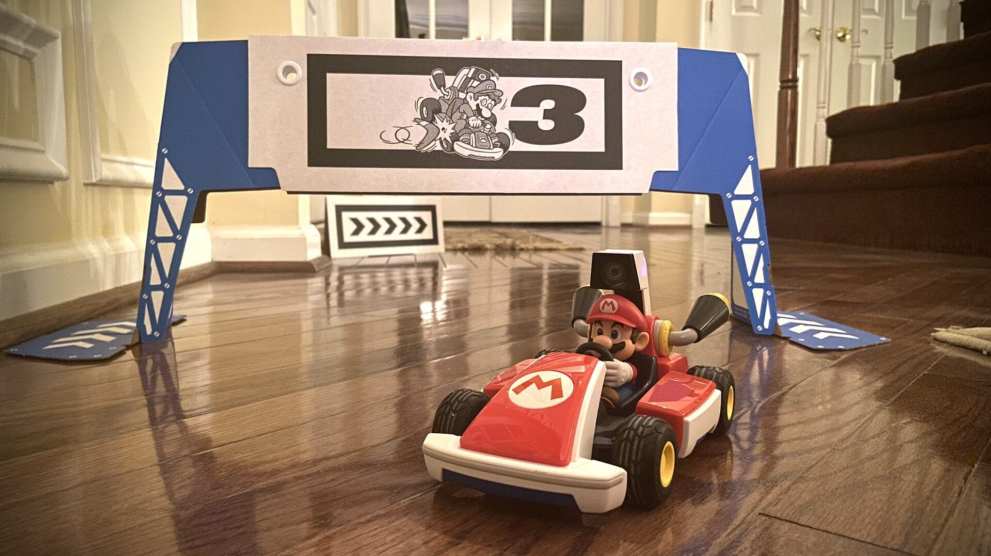
Taking everything out of the box and starting the course set-up is very easy and genuinely fun. Even if you’re an adult, you’ll feel a childlike sense of wonder at the possibilities while the game instructs you to take the kart for its first spin and then take a selfie for your very own driver’s license.
The game will start you off by setting up your first course, though it offers little advice or guidance on the best ways of doing so. It’ll tell you to set up the four included gates in number order, Lakitu will put “paint” on your wheels, and you’ll drive your desired path for your course. After its creation, you’ll be able to play any of the game modes.
There’s a ton of content in Home Circuit right out of the box. There are 24 Grand Prix courses, all unlocked from the start. If you don’t feel ready to jump into those, there’s a time trial mode where you can race to get the best time on your real-life course. If you don’t feel ready for that, you can just drive around freely in explore mode.
With all courses available from the start, I wondered if there was anything to unlock as I played. Luckily, there’s a lot of content in that regard as well. There are unlockables in the form of karts, outfits, radio stations, horn sounds, gate customizations (like boosts and fireballs), and environments (like desert or ice tundra).
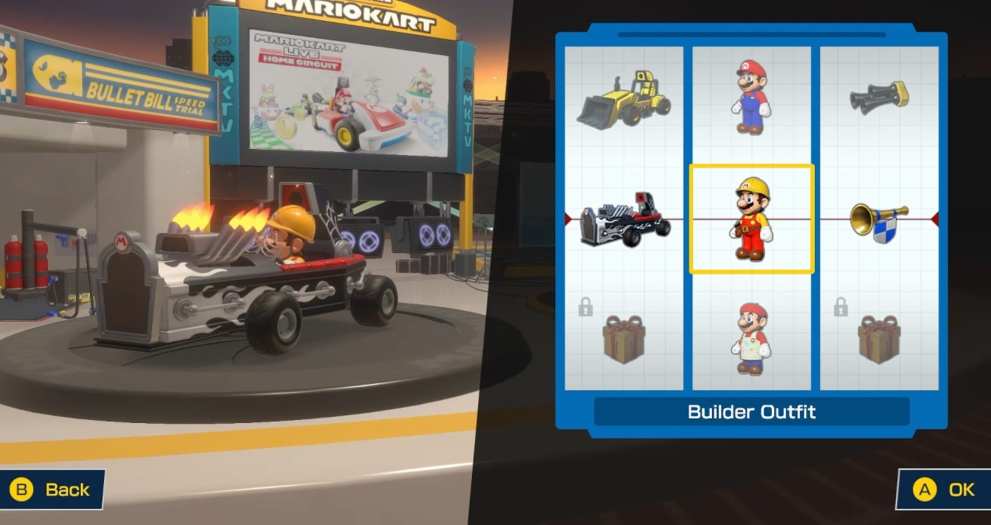
My first course worked out really well, though it was extremely basic. I placed the first gate in the kitchen, drove through gate #2 in the dining room, past the stairs into the hallway through gate #3, and finally through the final gate at the other end of the kitchen.
I was fortunate that this space was a natural circle in the house, and each room had hardwood floors or tiles that made it easy to drive the kart on.
I raced through a few of the Grand Prix modes, which feel very similar to any other Mario Kart game. Each one is themed with scenery and characters superimposed over your real-life course.
Eventually, my friend wanted to try it out. Because there is only one kart included in the box and we only had one set, we had to take turns by passing the Switch back and forth while one played and the other watched. We had the most fun playing the time trial mode together, attempting to beat each other’s fastest time.
One of the biggest downfalls of Home Circuit is that only one kart is included in each set.
Mario Kart is meant to be a multiplayer game and is best played with others. Even though the game supports up to four karts, you’d have to buy additional $99 sets to do this. And if you decide to shell out the money for the extra sets, you can still only use four gates in your courses, meaning the gates in the additional sets are useless while playing together.
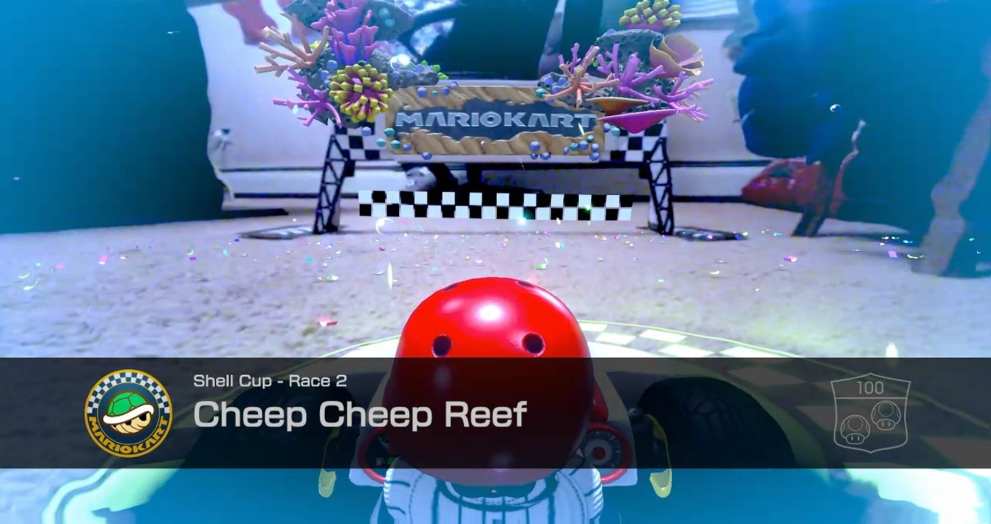
Eventually, I had to take down the course and pack up the gates. After all, I had placed them right in the kitchen and hallway where the family had to walk through.
My next course was a bit more elaborate. I decided to build it upstairs where I could circulate the kart through several rooms in a more intricate pattern than a circle. I got quite creative with it, placing amiibo figures around the track to help guide the kart’s path.
When I tried syncing it with the Switch, though, I realized my course was no good. After about 15-20 feet, the kart begins to lose connection to the Switch, causing the screen to appear glitchy and unable to read inputs. Any farther than that and it loses connection entirely.
So I scrapped all of my hard work and rebuilt it within a closer range. My new area was limited to carpet, which worked but wasn’t ideal; the bumpier ride made it hard to avoid obstacles while racing.
The rooms I had to work with also had quite a bit of furniture, which made it difficult to set up all four gates in such a cramped space. While my course technically worked in this new set-up, it felt very restricted in some spots.
I clearly didn’t have the right space for it here, and this became even more evident when I tried to do some races. Some obstacles like bananas were completely unavoidable due to physical confinements such as driving through the door frame or around a desk. I couldn’t go around these obstacles, but my virtual opponents could clip right through the walls.
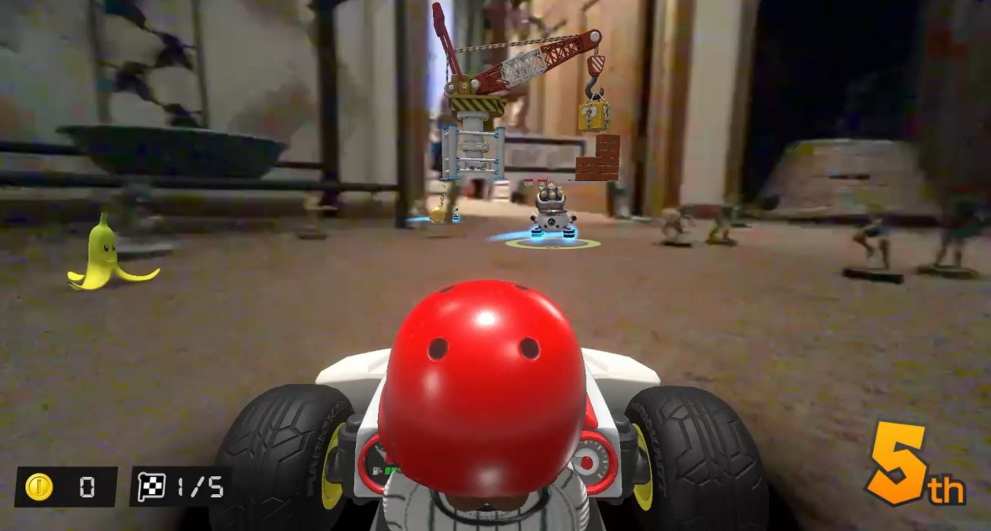
The camera on the kart is decent enough for a $99 device that broadcasts to the Switch in real-time. It’s not the highest quality, though, so it’s sometimes difficult to see the details of your track on the screen, even in a well-lit room.
I was disappointed to find you can’t take screenshots or record video clips in the Home Circuit software. I understand the reasoning behind this; it is likely to prevent people from posting private or sensitive details of their homes and faces on social media, but it would have been cool to be able to post a 30-second clip of my kart going a lap around my course.
After taking down my second course, I wondered how motivated I would be to rebuild it the next time I wanted to play. It was a lot of set-up involved for only a small amount of playtime. The fun is clearly in the act of designing and building the courses, so the best possibility is to find a good space where you can keep it up for a long time, such as in a basement or spare room.
Still, I wished that there was a way you could take a recording of your course using the kart’s camera and be able to save and play through previously built tracks on your Switch without the need for the kart. It would still be cool to see your creation come back to life on the screen without it racing in real life around you.
In the right conditions, Home Circuit works very well. The kart is sturdy and looks physically pleasing, so it’s a nice shelf item even when you aren’t playing.
The variety of environments makes it fun to drive around the room in explore mode. Sometimes, this is even more fun than the actual races. People and pets are entertained by watching the kart drive around.
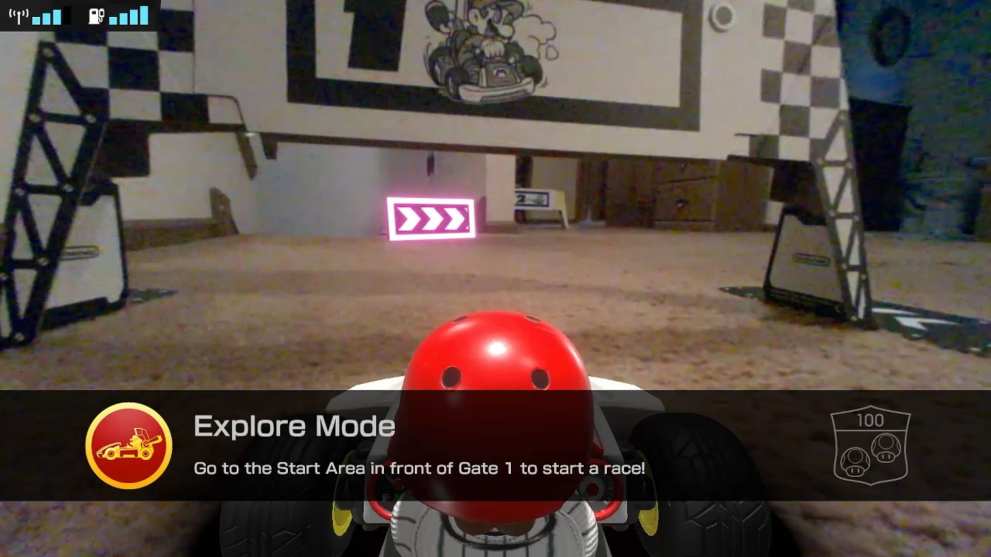
The tech involved is also good. Even though the camera isn’t very high quality, it reads the gates and signs without any problem, and hitting real-life obstacles like a table or wall causes you to spin out in-game. This is only detrimental when the kart becomes completely stuck and you must walk over to free it (which you may as well consider a loss in the race).
My time with Home Circuit was fun, and I’m sure I’ll set up a new course sometime in the future when I’m feeling particularly inspired. I just wish there were two karts in the box so I could play with a friend, and I wish the range was double what it is so I could build bigger and better courses. I’m not so sure I feel like I got a $99 value out of what I played so far.
If you have kids around the ages 10-15, Mario Kart Live: Home Circuit is a great Christmas gift, but only if your kids are okay with sharing or you’re willing to shell out $200 for two sets. It’s expensive, so maybe make sure they’re actually willing to build a course every time they want to play if you’re not okay with it being left around the house for long periods of time.
If you’re an adult without kids looking for something to do on a weekend with friends, you’re probably better off buying a copy of Mario Kart 8 Deluxe for $50 and two regular RC cars on Amazon for $30. Use the extra $20 to order a pizza for the group.
- Easy to set up.
- Fun to create real-life courses.
- Lots of content included from the start with plenty of cosmetics to unlock.
- Kart is sturdy and visually pleasing.
- Only one kart included in the box; multiplayer is at a premium.
- Not ideal for small or cluttered spaces.
- Limited range stifles the creativity of large, elaborate courses.
- Connectivity is sometimes unreliable.

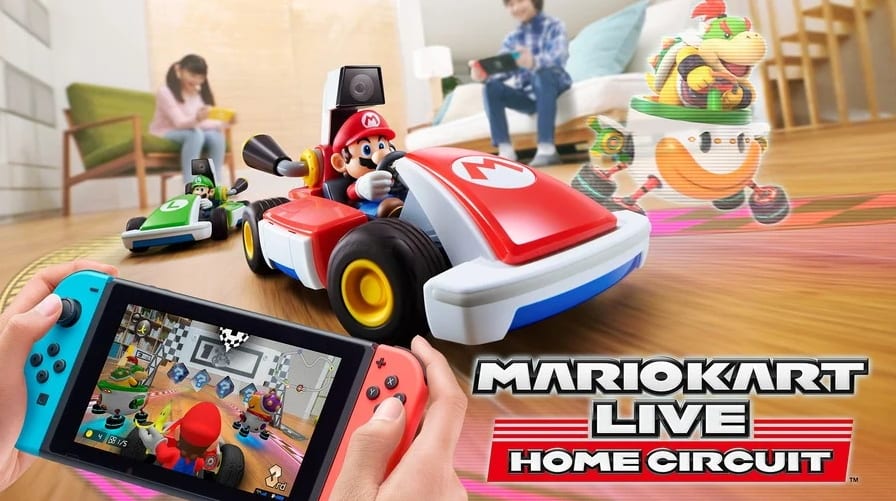

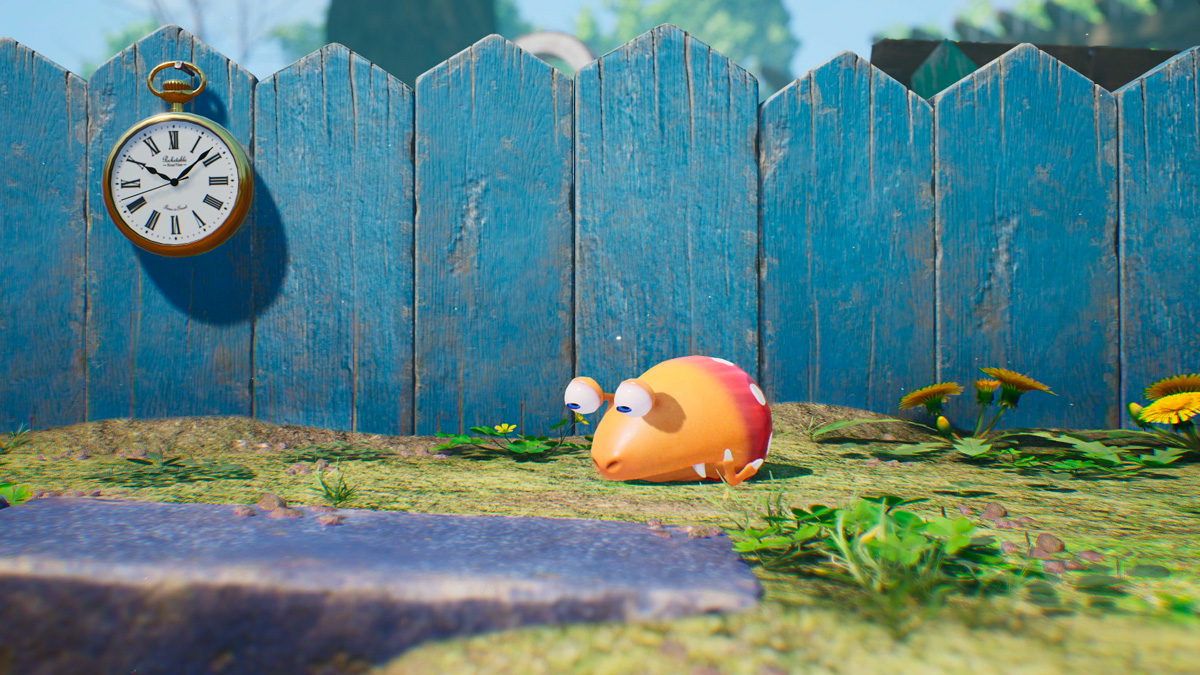


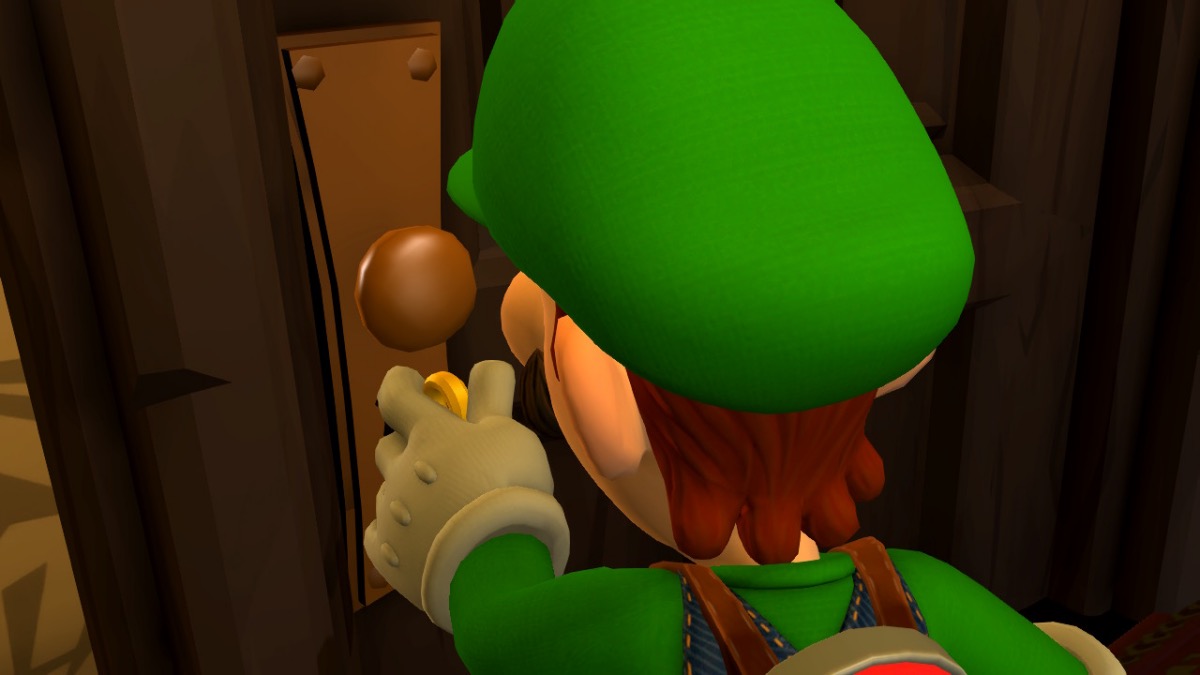





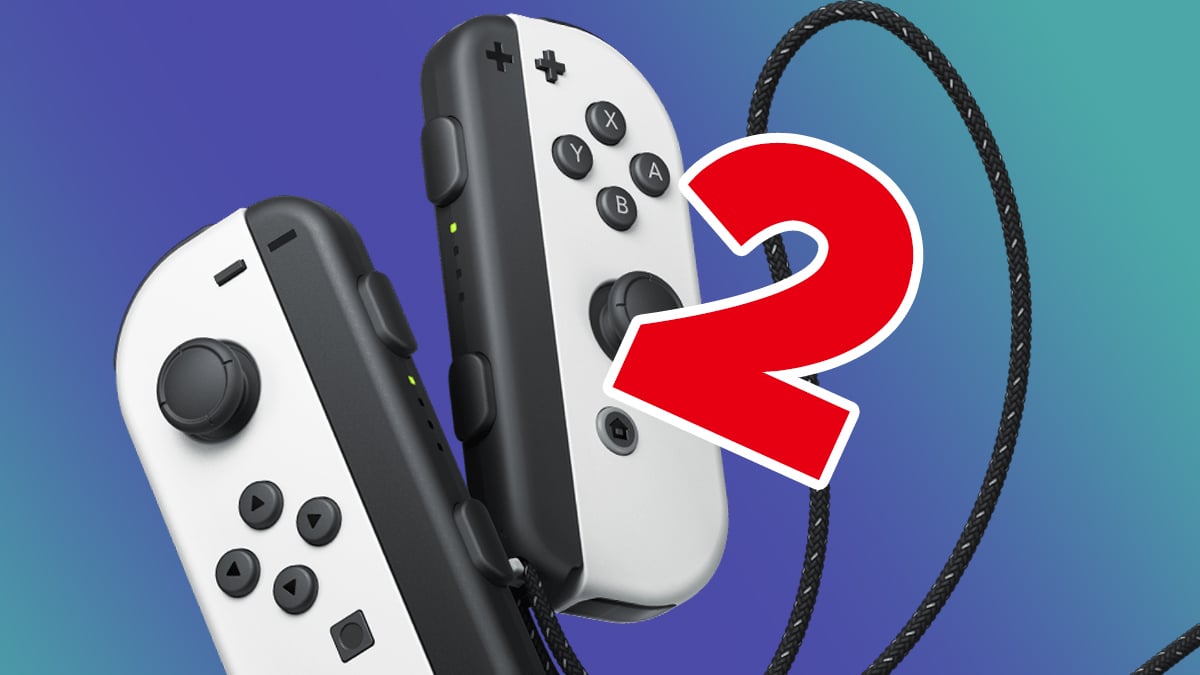
Updated: Apr 2, 2021 02:33 pm